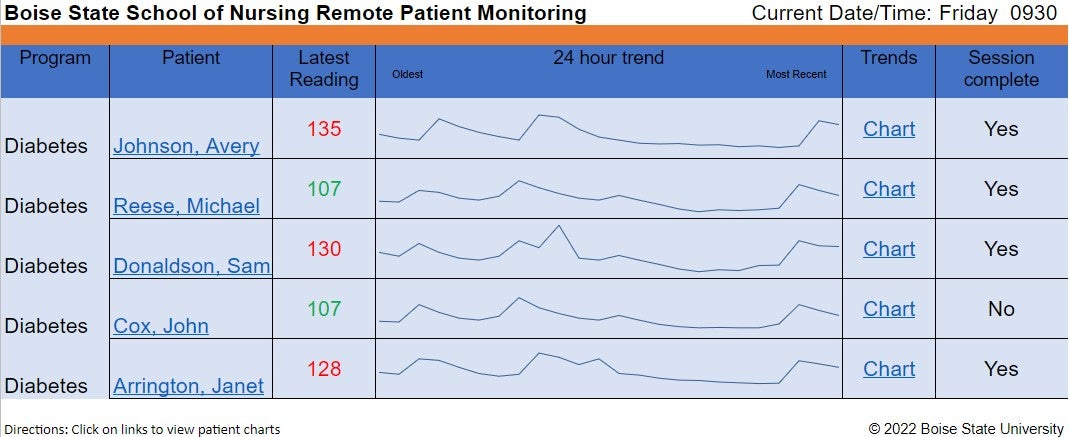Remote Patient Management Simulation Scenario- Diabetes Management
This simulation helps students experience the use of remotely managed patient data combined with telehealth technology and therapeutic communication for patient education and care planning. As part of the student’s preparation for simulation, they are provided access to the Boise State University Remote Patient Monitoring dashboard where they are able find, assess, and interpret patient data to prepare for the simulated telehealth visit.
Click here to download a copy of the dashboard
This is a free resource provided by Boise State University, but if you would like to support the Boise State University Simulation Center in continuing to provide these valuable resources, it would be very much appreciated.
Scenario Synopsis:
Avery is a 19 y/o patient who has managed Type 1 diabetes with a continuous glucose monitor tied to a smartphone and self-doses his insulin. They have recently moved to a college dorm and are learning to control their diabetes without the assistance of their fathers. Through remote monitoring of blood glucose results, the clinic has noticed some fluctuations/deviations in Avery’s glucose control and has scheduled a virtual visit with the patient to discuss the change. Focus is on utilization of remotely monitored data to inform care planning, disease management, virtual communication with patient and family, and utilization of technology to successfully complete the visit.

Outcomes/Learning Objectives:
Student will successfully conduct a telehealth visit with the patient and family which will include review and assessment of remotely collected patient data, care planning, and therapeutic communication.
Clinical reasoning: Use appropriate data when planning care (AACN Essential 8.2c)
Nursing knowledge application: Use information and communication technology in a manner that supports the nurse-patient relationship (AACN Essential 8.3v)
Therapeutic communication: Implement individualized plan of care using established protocols (AACN Essential 2.6a)